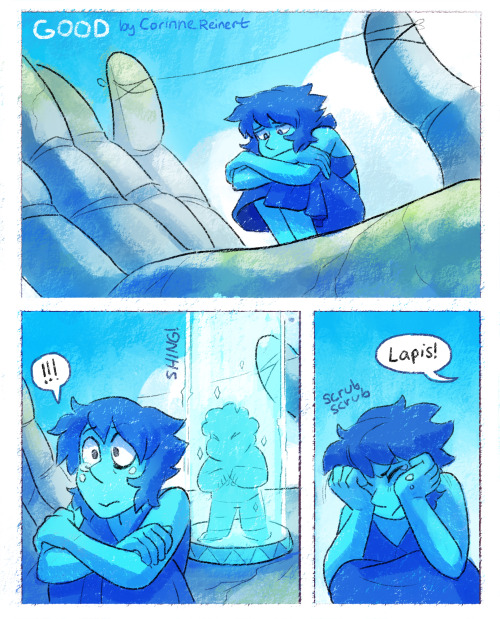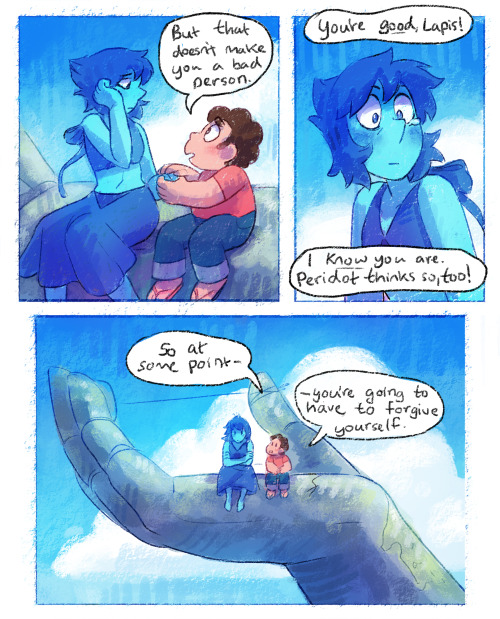Galacticly Awesome
Galacticly awesome
Living and Working Aboard Station
Join us on Facebook Live for a conversation with astronaut Kate Rubins and the director of the National Institutes for Health on Tuesday, October 18 at 11:15 a.m. ET.
Astronaut Kate Rubins has conducted out of this world research aboard Earth’s only orbiting laboratory. During her time aboard the International Space Station, she became the first person to sequence DNA in space. On Tuesday, she’ll be live on Facebook with National Institute of Health director Francis Collins, who led the effort to map the human genome. You can submit questions for Kate using the hashtag #SpaceChat on Twitter, or during the live event. Here’s a primer on the science this PhD astronaut has been conducting to help inspire your questions:

Kate has a background in genomics (a branch of molecular genetics that deals with the study of genomes,specifically the identification and sequencing of their constituent genes and the application of this knowledge in medicine, pharmacy,agriculture, and other fields). When she began her tenure on the station, zero base pairs of DNA had been sequenced in space. Within just a few weeks, she and the Biomolecule Sequencer team had sequenced their one billionth base of DNA aboard the orbital platform.
“I [have a] genomics background, [so] I get really excited about that kind of stuff,” Rubins said in a downlink shortly after reaching the one billion base pairs sequenced goal.
Learn more about this achievement:
+First DNA Sequencing in Space a Game Changer
+Science in Short: One Billion Base Pairs Sequenced
Why is DNA Sequencing in Space a Big Deal?
A space-based DNA sequencer could identify microbes, diagnose diseases and understand crew member health, and potentially help detect DNA-based life elsewhere in the solar system.
+Why Sequencing DNA in Space is a Big Deal
https://youtu.be/1N0qm8HcFRI
Miss the Reddit AMA on the subject? Here’s a transcript:
+NASA AMA: We just sequenced DNA in space for the first time. Ask us anything!
NASA and Its Partnerships

We’re not doing this alone. Just like the DNA sequencing was a collaborative project with industry, so is the Eli Lilly Hard to Wet Surfaces investigation, which is a partnership between CASIS and Eli Lilly Co. In this experiment aboard the station, astronauts will study how certain materials used in the pharmaceutical industry dissolve in water while in microgravity. Results from this investigation could help improve the design of tablets that dissolve in the body to deliver drugs, thereby improving drug design for medicines used in space and on Earth. Learn more about what we and our partners are doing:
+Eli Lilly Hard to Wet Surfaces – been happening the last week and a half or so
Researchers to Test How Solids Dissolve in Space to Design Better Tablets and Pills on Earth
With our colleagues at the Stanford University School of Medicine, we’re also investigating the effects of spaceflight on stem cell-derived heart cells, specifically how heart muscle tissue, contracts, grows and changes in microgravity and how those changes vary between subjects. Understanding how heart muscle cells change in space improves efforts for studying disease, screening drugs and conducting cell replacement therapy for future space missions. Learn more:
+Heart Cells
+Weekly Recap From the Expedition Lead Scientist for Aug. 18, 2016
It’s Not Just Medicine

Kate and her crew mates have also worked on the combustion experiments.
Kate has also worked on the Bigelow Expandable Activity Module (BEAM), an experimental expandable capsule that docks with the station. As we work on our Journey to Mars, future space habitats are a necessity. BEAM, designed for Mars or other destinations, is a lightweight and relatively simple to construct solution. Kate has recently examined BEAM, currently attached to the station, to take measurements and install sensors.

Kate recently performed a harvest of the Plant RNA Regulation experiment, by removing seed cassettes and stowing them in cold stowage.

The Plant RNA Regulation investigation studies the first steps of gene expression involved in development of roots and shoots. Scientists expect to find new molecules that play a role in how plants adapt and respond to the microgravity environment of space, which provides new insight into growing plants for food and oxygen supplies on long-duration missions. Read more about the experiment:
+Plant RNA Harvest
NASA Astronaut Kate Rubins is participating in several investigations examining changes in her body as a result of living in space. Some of these changes are similar to issues experienced by our elderly on Earth; for example, bone loss (osteoporosis), cardiovascular deconditioning, immune dysfunction, and muscle atrophy. Understanding these changes and how to prevent them in astronauts off the Earth may help improve health for all of us on the Earth. In additional, the crew aboard station is also working on more generalized studies of aging.
+ Study of the effects of aging on C. elegans, a model organism for a range of biological studies.
More Posts from Aliensteel23 and Others
You gotta love gem fusions.











Chalcedony !
I Love ROBOTBOY!!!!

@deathbot5000 @glamourcoffee How dare you take this honor from me. >A>
We’re gonna fight!

Beauty of space
What’s Up for December 2016?
What’s Up for December? Mars and Neptune above the crescent moon and a New Year’s Eve comet!

2016 ends with fireworks as three planets line up as if ejected from a Roman candle. Mercury, Venus and Mars are visible above the sunset horizon all month long.

As Venus climbs higher in the sky, it looks brighter and larger than it appeared last month.

On New Year’s Eve, Mars and Neptune appear very close to each other. Through telescopes, rusty red Mars and blue-green Neptune‘s colors contrast beautifully.

There are two meteor showers this month – the Geminds and the Ursids. The best time to see the reliable Geminids will be next year, when the full moon won’t be so bright and interfering. This year, however, we may luck out and see some of the brighter meteors on the evening of the 13th and the morning of the 14th.

The best time to view the Ursids, radiating from Ursa Minor, or the little Dipper, will be from midnight on the 21st until about 1 a.m. on the 22nd, before the moon rises. They may be active on the 23rd and 24th, too.

We haven’t had a good easy-to-see comet in quite a while, but beginning in December and through most of 2017 we will have several binocular and telescopic comets to view.

The first we’ll be able to see is Comet 45P/Honda-Mrkos-Pajdušáková, which will appear low on the western horizon on December 15th. On that date, the comet will pass the pretty globular cluster M75.

By the 21st, it will appear edge-on, sporting a bluish-green head and a thin, sharp view of the fan-shaped tail.

On New Years Eve, the comet and the crescent moon will rendezvous to say farewell to 2016. A “periodic” comet is a previously-identified comet that’s on a return visit. Periodic comet 45P returns to the inner solar system every 5.25 years, and that’s the one that will help us ring in the new year.

Watch the full What’s Up for December video:
Make sure to follow us on Tumblr for your regular dose of space: http://nasa.tumblr.com
Now those are 5 great heroes.
![Voltron: Legendary Defender Season 2 Now Streaming [x]](https://64.media.tumblr.com/39070de2b5836ba0f4a3295933bd60b8/tumblr_ok39yrTfcw1u3bhkao1_500.gif)
![Voltron: Legendary Defender Season 2 Now Streaming [x]](https://64.media.tumblr.com/05ee5b724c2559b61592a1e980ea3e58/tumblr_ok39yrTfcw1u3bhkao2_500.gif)
![Voltron: Legendary Defender Season 2 Now Streaming [x]](https://64.media.tumblr.com/f8b5fc0bbb8f59880da3c874c00c543d/tumblr_ok39yrTfcw1u3bhkao3_500.gif)
![Voltron: Legendary Defender Season 2 Now Streaming [x]](https://64.media.tumblr.com/9d5afbb305763028c401efd4d18d020f/tumblr_ok39yrTfcw1u3bhkao4_500.gif)
![Voltron: Legendary Defender Season 2 Now Streaming [x]](https://64.media.tumblr.com/2790f57379e82ac4cdcfc34111e8c869/tumblr_ok39yrTfcw1u3bhkao5_500.gif)
![Voltron: Legendary Defender Season 2 Now Streaming [x]](https://64.media.tumblr.com/5a237dac7ed2253983e28cc819c2f18c/tumblr_ok39yrTfcw1u3bhkao6_500.gif)
Voltron: Legendary Defender Season 2 Now Streaming [x]
Love it! More like the original version

NGL, Reboot Upgrade looks sick with normal colors.
New things in space
Solar System: Things to Know This Week
Our Dawn mission to the asteroid belt is no ordinary deep space expedition.
Instead of traditional chemical rockets, the spacecraft uses sophisticated ion engines for propulsion. This enabled Dawn to become the first mission to orbit not one, but two different worlds — first the giant asteroid Vesta and now the dwarf planet Ceres. Vesta and Ceres formed early in the solar system’s history, and by studying them, the mission is helping scientists go back in time to the dawn of the planets. To mark a decade since Dawn was launched on Sept. 27, 2007, here are 10 things to know about this trailblazing mission.
1. Ion Engines: Not Just for Sci-Fi Anymore

Most rocket engines use chemical reactions for propulsion, which tend to be powerful but short-lived. Dawn’s futuristic, hyper-efficient ion propulsion system works by using electricity to accelerate ions (charged particles) from xenon fuel to a speed seven to 10 times that of chemical engines. Ion engines accelerate the spacecraft slowly, but they’re very thrifty with fuel, using just milligrams of xenon per second (about 10 ounces over 24 hours) at maximum thrust. Without its ion engines, Dawn could not have carried enough fuel to go into orbit around two different solar system bodies. Try your hand at an interactive ion engine simulation.
2. Time Capsules

Scientists have long wanted to study Vesta and Ceres up close. Vesta is a large, complex and intriguing asteroid. Ceres is the largest object in the entire asteroid belt, and was once considered a planet in its own right after it was discovered in 1801. Vesta and Ceres have significant differences, but both are thought to have formed very early in the history of the solar system, harboring clues about how planets are constructed. Learn more about Ceres and Vesta—including why we have pieces of Vesta here on Earth.
3. Portrait of a Dwarf Planet

This view of Ceres built from Dawn photos is centered on Occator Crater, home of the famous “bright spots.” The image resolution is about 460 feet (140 meters) per pixel.
Take a closer look.
4. What’s in a Name?
Craters on Ceres are named for agricultural deities from all over the world, and other features carry the names of agricultural festivals. Ceres itself was named after the Roman goddess of corn and harvests (that’s also where the word “cereal” comes from). The International Astronomical Union recently approved 25 new Ceres feature names tied to the theme of agricultural deities. Jumi, for example, is the Latvian god of fertility of the field. Study the full-size map.
5. Landslides or Ice Slides?

Thanks to Dawn, evidence is mounting that Ceres hides a significant amount of water ice. A recent study adds to this picture, showing how ice may have shaped the variety of landslides seen on Ceres today.
6. The Lonely Mountain

Ahuna Mons, a 3-mile-high (5-kilometer-high) mountain, puzzled Ceres explorers when they first found it. It rises all alone above the surrounding plains. Now scientists think it is likely a cryovolcano — one that erupts a liquid made of volatiles such as water, instead of rock. “This is the only known example of a cryovolcano that potentially formed from a salty mud mix, and that formed in the geologically recent past,” one researcher said. Learn more.
7. Shining a Light on the Bright Spots

The brightest area on Ceres, located in the mysterious Occator Crater, has the highest concentration of carbonate minerals ever seen outside Earth, according to studies from Dawn scientists. Occator is 57 miles (92 kilometers) wide, with a central pit about 6 miles (10 kilometers) wide. The dominant mineral of this bright area is sodium carbonate, a kind of salt found on Earth in hydrothermal environments. This material appears to have come from inside Ceres, and this upwelling suggests that temperatures inside Ceres are warmer than previously believed. Even more intriguingly, the results suggest that liquid water may have existed beneath the surface of Ceres in recent geological time. The salts could be remnants of an ocean, or localized bodies of water, that reached the surface and then froze millions of years ago. See more details.
8. Captain’s Log
Dawn’s chief engineer and mission director, Marc Rayman, provides regular dispatches about Dawn’s work in the asteroid belt. Catch the latest updates here.
9. Eyes on Dawn
Another cool way to retrace Dawn’s decade-long flight is to download NASA’s free Eyes on the Solar System app, which uses real data to let you go to any point in the solar system, or ride along with any spacecraft, at any point in time—all in 3-D.
10. No Stamp Required

Send a postcard from one of these three sets of images that tell the story of dwarf planet Ceres, protoplanet Vesta, and the Dawn mission overall.
Make sure to follow us on Tumblr for your regular dose of space: http://nasa.tumblr.com.
A tribute to every brave men and women who rise their lives for our free country.










RIP to all the Men and Women who gave their lives for us to be able to be “Free”
Beautiful gems.
What would a Bloodstone and a Hackmanite make? A Bloodstone and a blue cat's eye? The Hackmanite and the cat's eye? Please and thank you very kindly 🙂
For Bloodstone and Hackmanite, I would recommend:

Chalcedony

Color Change Garnet

Diaspore
For Bloodstone and Blue Cat’s Eye:

Dioptase

Chrysocolla

Amazonite
And for Hackmanite and Blue Cat’s Eye, I’d recommend:

Cat’s Eye Alexandrite

Purple Fluorite

Black Opal
I hope that helps~
- Mod Sapphire ❤
One day humans will live on another earth-like planet that is safe for us.
A Space Odyssey: 21 Years of Searching for Another Earth
There are infinite worlds both like and unlike this world of ours. We must believe that in all worlds there are living creatures and plants and other things we see in this world. – Epicurus, c. 300 B.C.

Are we alone? Are there other planets like ours? Does life exist elsewhere in the universe?
These are questions mankind has been asking for years—since the time of Greek philosophers. But for years, those answers have been elusive, if not impossible to find.
The month of October marks the 21st anniversary of the discovery of the first planet orbiting another sun-like star (aka. an exoplanet), 51 Pegasi b or “Dimidium.” Its existence proved that there were other planets in the galaxy outside our solar system.*

Even more exciting is the fact that astronomers are in hot pursuit of the first discovery of an Earth-like exoplanet orbiting a star other than the sun. The discovery of the so-called “blue dot” could redefine our understanding of the universe and our place in it, especially if astronomers can also find signs that life exists on that planet’s surface.
Astronomy is entering a fascinating era where we’re beginning to answer tantalizing questions that people have pondered for thousands of years.

Are we alone?
In 1584, when the Catholic monk Giordano Bruno asserted that there were “countless suns and countless earths all rotating around their suns,” he was accused of heresy.

But even in Bruno’s time, the idea of a plurality of worlds wasn’t entirely new. As far back as ancient Greece, humankind has speculated that other solar systems might exist and that some would harbor other forms of life.
Still, centuries passed without convincing proof of planets around even the nearest stars.

Are there other planets like ours?
The first discovery of a planet orbiting a star similar to the sun came in 1995. The Swiss team of Michel Mayor and Didier Queloz of Geneva announced that they had found a rapidly orbiting gas world located blisteringly close to the star 51 Pegasi.

This announcement marked the beginning of a flood of discoveries. Exotic discoveries transformed science fiction into science fact:
a pink planet
worlds with two or even three suns
a gas giant as light as Styrofoam
a world in the shape of an egg
a lava planet

But what about another Earth?
Our first exoplanet mission**, Kepler, launched in 2009 and revolutionized how astronomers understand the universe and our place in it. Kepler was built to answer the question—how many habitable planets exist in our galaxy?

And it delivered: Thousands of planet discoveries poured in, providing statistical proof that one in five sun-like stars (yellow, main-sequence G type) harbor Earth-sized planets orbiting in their habitable zones– where it’s possible liquid water could exist on their surface.

Now, our other missions like the Hubble and Spitzer space telescopes point at promising planetary systems (TRAPPIST-1) to figure out whether they are suitable for life as we know it.

Does life exist elsewhere in the universe?
Now that exoplanet-hunting is a mainstream part of astronomy, the race is on to build instruments that can find more and more planets, especially worlds that could be like our own.

Our Transiting Exoplanet Survey Satellite (TESS), set for launch in 2017-2018, will look for super-Earth and Earth-sized planets around stars much closer to home. TESS will find new planets the same way Kepler does—via the transit method—but will cover 400 times the sky area.

The James Webb Space Telescope, to launch in 2018, wil be our most powerful space telescope to date. Webb will use its spectrograph to look at exoplanet atmospheres, searching for signs of life.

We still don’t know where or which planets are in the habitable zones of the nearest stars to Earth. Searching out our nearest potentially habitable neighbors will be the next chapter in this unfolding story.

*The first true discovery of extrasolar planets was actually a triplet of dead worlds orbiting the remains of an exploded star, called a pulsar star. Two of three were found by Dr. Alexander Wolszczan in 1992– a full three years before Dimidium’s discovery. But because they are so strange, and can’t support life as we know it, most scientists would reserve the “first” designation for a planet orbiting a normal star.
** The French CoRoT mission, launched in 2006, was the first dedicated exoplanet space mission. It has contributed dozens of confirmed exoplanets to the ranks and boasts a roster of some of the most well-studied planets outside our solar system.
To stay up-to-date on our latest exoplanet discoveries, visit: https://exoplanets.nasa.gov
Make sure to follow us on Tumblr for your regular dose of space: http://nasa.tumblr.com
-
 aintitfun21 reblogged this · 7 years ago
aintitfun21 reblogged this · 7 years ago -
 charlottephillips-blog1 liked this · 8 years ago
charlottephillips-blog1 liked this · 8 years ago -
 invalidblacky-blog liked this · 8 years ago
invalidblacky-blog liked this · 8 years ago -
 best-hotels-posts reblogged this · 8 years ago
best-hotels-posts reblogged this · 8 years ago -
 arteims reblogged this · 8 years ago
arteims reblogged this · 8 years ago -
 malanka-sun liked this · 8 years ago
malanka-sun liked this · 8 years ago -
 thingsmaggydigs liked this · 8 years ago
thingsmaggydigs liked this · 8 years ago -
 blindjetpilot reblogged this · 8 years ago
blindjetpilot reblogged this · 8 years ago -
 supremeskoolkid liked this · 8 years ago
supremeskoolkid liked this · 8 years ago -
 a-loss-forwords liked this · 8 years ago
a-loss-forwords liked this · 8 years ago -
 wolfbriar reblogged this · 8 years ago
wolfbriar reblogged this · 8 years ago -
 footstepsinthesky liked this · 8 years ago
footstepsinthesky liked this · 8 years ago -
 ditaan-blog-blog liked this · 8 years ago
ditaan-blog-blog liked this · 8 years ago -
 alicerobertstext reblogged this · 8 years ago
alicerobertstext reblogged this · 8 years ago -
 riderbk liked this · 8 years ago
riderbk liked this · 8 years ago -
 ironhidesdaughter-blog reblogged this · 8 years ago
ironhidesdaughter-blog reblogged this · 8 years ago -
 kairav-blog liked this · 8 years ago
kairav-blog liked this · 8 years ago -
 etherviolet liked this · 8 years ago
etherviolet liked this · 8 years ago -
 beatrice-otter reblogged this · 8 years ago
beatrice-otter reblogged this · 8 years ago -
 nofii95 liked this · 8 years ago
nofii95 liked this · 8 years ago -
 raversfantasyrf liked this · 8 years ago
raversfantasyrf liked this · 8 years ago -
 kaldary reblogged this · 8 years ago
kaldary reblogged this · 8 years ago -
 kratossuvarious reblogged this · 8 years ago
kratossuvarious reblogged this · 8 years ago -
 kratossuvarious reblogged this · 8 years ago
kratossuvarious reblogged this · 8 years ago -
 kratossuvarious liked this · 8 years ago
kratossuvarious liked this · 8 years ago -
 zoyrino liked this · 8 years ago
zoyrino liked this · 8 years ago -
 the-grey-areas-blog reblogged this · 8 years ago
the-grey-areas-blog reblogged this · 8 years ago -
 123456789abg-blog liked this · 8 years ago
123456789abg-blog liked this · 8 years ago -
 jigokunotenshi reblogged this · 8 years ago
jigokunotenshi reblogged this · 8 years ago -
 wastelandmiracle liked this · 8 years ago
wastelandmiracle liked this · 8 years ago -
 kansouame liked this · 8 years ago
kansouame liked this · 8 years ago -
 meinenaffenhosen liked this · 8 years ago
meinenaffenhosen liked this · 8 years ago -
 depthsofmysol reblogged this · 8 years ago
depthsofmysol reblogged this · 8 years ago -
 chromeviking liked this · 8 years ago
chromeviking liked this · 8 years ago -
 opdroygaraytekin reblogged this · 8 years ago
opdroygaraytekin reblogged this · 8 years ago -
 opdroygaraytekin liked this · 8 years ago
opdroygaraytekin liked this · 8 years ago -
 samafermion liked this · 8 years ago
samafermion liked this · 8 years ago